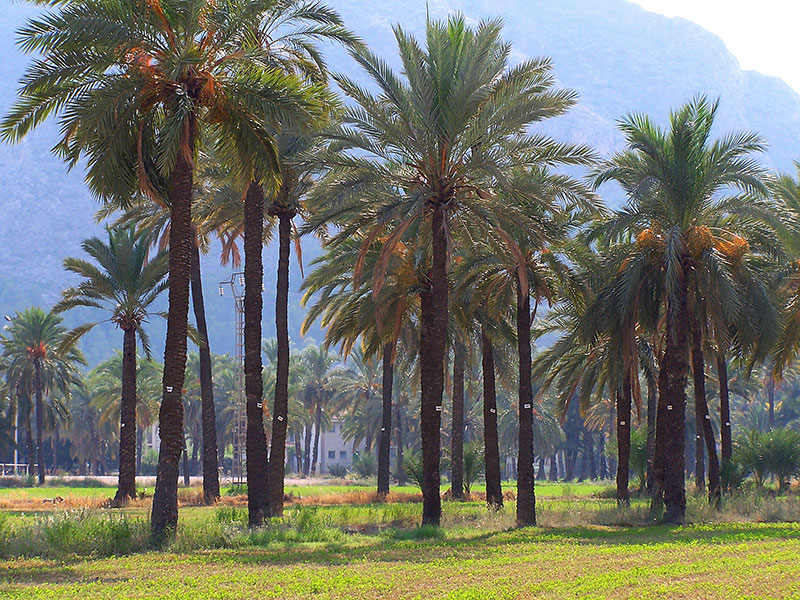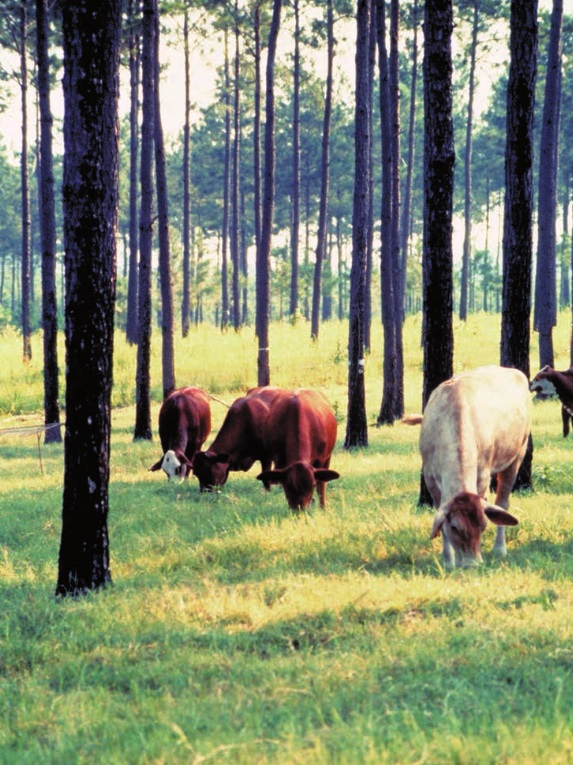|
Chestnut Orchard
A chestnut orchard is an open stand of grafted chestnut (''selva castanile'') trees for fruit production. In this agroforestry system, trees are usually intercropped with cereals, hay or pasture. These orchards are traditional systems in Canton of Ticino (Switzerland) and Northern Italy, where they are called “selva castanile”. Similar systems can also be found in the Mediterranean region, for example, in France, Greece, Portugal or Spain. History The chestnut tree was once known as the "bread tree". This name has its origins in the fact that chestnuts were widespread in Southern Europe and the use of its fruit abundant, thanks also to its healthy nutritional values. In addition to the fruits, the chestnut tree offered people wood, leaves, flowers and permitted honey production, thus becoming in certain historical periods of vital importance for the rural population (hence the term "Chestnut Civilization", in the sense of material and cultural organization of the mountain ... [...More Info...] [...Related Items...] OR: [Wikipedia] [Google] [Baidu] |
Grove (nature)
A grove is a small group of trees with minimal or no undergrowth, such as a sequoia grove, or a small orchard planted for the cultivation of fruits or nuts. Other words for groups of trees include ''woodland'', ''woodlot'', ''thicket'', and ''stand''. The main meaning of " grove" is a group of trees that grow close together, generally without many bushes or other plants underneath. It is an old word in the English language, with records of its use dating as far back as the late 9th century. The word's true origins are unknown; the word, or a related root, cannot be found in any other Germanic language. Naturally-occurring groves are typically small, perhaps a few acres at most.In contrast, orchards, which are normally intentional planting of trees, may be small or very large, like the apple orchards in Washington state, and orange groves in Florida. Historically, groves were considered sacred in pagan, pre-Christian Germanic and Celtic cultures. Helen F. Leslie-Jacobsen a ... [...More Info...] [...Related Items...] OR: [Wikipedia] [Google] [Baidu] |
Canton Of Grisons
The Grisons () or Graubünden,Names include: *german: (Kanton) Graubünden ; * Romansh: ** rm, label=Sursilvan, (Cantun) Grischun ** rm, label=Vallader, (Chantun) Grischun ** rm, label= Puter, (Chantun) Grischun ** rm, label=Surmiran, (Cantun) Grischun ** rm, label=Sutsilvan, (Cantùn) Grischùn ** rm, label=Rumantsch Grischun, (Chantun) Grischun; * it, (Cantone dei) Grigioni ; *french: (Canton des) Grisons . See also other names. more formally the Canton of the Grisons or the Canton of Graubünden, is one of the twenty-six cantons of Switzerland. It has eleven regions, and its capital is Chur. The German name of the canton, , translates as the "Grey Leagues", referring to the canton's origin in three local alliances, the Three Leagues. The other native names also refer to the Grey League: in Sutsilvan, in the other forms of Romansh, and in Italian. ''"Rhaetia"'' is the Latin name for the area. The Alpine ibex is the canton's heraldic symbol. The largest and easternmost ... [...More Info...] [...Related Items...] OR: [Wikipedia] [Google] [Baidu] |
Edible Nuts And Seeds
An edible item is any item that is safe for humans to eat. "Edible" is differentiated from "eatable" because it does not indicate how an item tastes, only whether it is fit to be eaten. Nonpoisonous items found in nature – such as some mushrooms, insects, seaweed, and so forth – are referred to as edible. Processed items that normally are not ingested but are specially manufactured to be so, like edible underwear or edible packaging, are also labeled as edible. Edible items in nature It is estimated that approximately half of about 400,000 plant species on earth are edible, yet ''Homo sapiens'' consume only about 200 plant species, because these are the simplest to domesticate. Edible plants found in nature include certain types of mushrooms, flowers, seeds, berries, seaweed, and cacti. Being able to identify the versions of these plants that are safe to eat is an important survival skill. Many animals are also edible, including domesticated livestock as well as wild insec ... [...More Info...] [...Related Items...] OR: [Wikipedia] [Google] [Baidu] |
Castanea
The chestnuts are the deciduous trees and shrubs in the genus ''Castanea'', in the beech family Fagaceae. They are native to temperate regions of the Northern Hemisphere. The name also refers to the edible nut (fruit), nuts they produce. The unrelated horse chestnuts (genus ''Aesculus'') are not true chestnuts, but are named for producing nuts of similar appearance that are mildly poisonous to humans. True chestnuts should also not be confused with Eleocharis dulcis, water chestnuts, which are tubers of an aquatic herbaceous plant in the sedge family Cyperaceae. Other species commonly mistaken for chestnut trees are the chestnut oak (''Quercus prinus'') and the American beech (''Fagus grandifolia''),Chestnut Tree in chestnuttree.net. both of which are also in the Fagaceae family. Brazil nuts, called "Brasil chestnuts" ('' ... [...More Info...] [...Related Items...] OR: [Wikipedia] [Google] [Baidu] |
Mycosphaerella Maculiformis
''Mycosphaerella punctiformis'' is a fungal plant pathogen. In Iceland it is common on the dead leaves of ''Betula pubescens ''Betula pubescens'' (syn. ''Betula alba''), commonly known as downy birch and also as moor birch, white birch, European white birch or hairy birch, is a species of deciduous tree, native and abundant throughout northern Europe and northern Asia ...'' and '' Salix lanata''. See also * List of ''Mycosphaerella'' species References Fungal plant pathogens and diseases punctiformis Fungi described in 1794 Taxa named by Christiaan Hendrik Persoon {{fungus-plant-disease-stub ... [...More Info...] [...Related Items...] OR: [Wikipedia] [Google] [Baidu] |
Torymus Sinensis
''Torymus'' is a genus of chalcid wasps from the family Torymidae which was named by the Swedish naturalist Johan Wilhelm Dalman in 1820. Most species are ectoparasitoids of gall forming insects. There are more than 400 spp. worldwide. See also * List of Torymus species These 363 species belong to ''Torymus'', a genus of chalcid wasps in the family Torymidae. ''Torymus'' species * '' Torymus absonus'' Narendran & Kumar, 2005 * '' Torymus aceris'' Boucek, 1994 * '' Torymus acrophilae'' Ruschka, 1921 * '' Torymus ... References External links Bugguide.net. Genus Torymus Hymenoptera genera Taxa named by Johan Wilhelm Dalman Chalcidoidea {{chalcidoidea-stub ... [...More Info...] [...Related Items...] OR: [Wikipedia] [Google] [Baidu] |
Dryocosmus Kuriphilus
''Dryocosmus kuriphilus'' is a species of gall wasp known by the common names chestnut gall wasp, Oriental chestnut gall wasp, and Asian chestnut gall wasp. It is native to China and it is known in many other parts of the world, particularly the Northern Hemisphere, as an introduced species and an invasive horticultural pest. It attacks many species of chestnut (genus ''Castanea''), including most cultivated varieties. It is considered the world's worst pest of chestnuts.CABI, 2013''Dryocosmus kuriphilus''.In: Invasive Species Compendium. Wallingford, UK: CAB International. Distribution When it was first discovered, the wasp was considered to be a species of '' Biorhiza''. It was given its current name in 1951, when it was formally described.''Dryocosmus kuriphilus''. Data Sheets on ... [...More Info...] [...Related Items...] OR: [Wikipedia] [Google] [Baidu] |
Carbon Sequestration
Carbon sequestration is the process of storing carbon in a carbon pool. Carbon dioxide () is naturally captured from the atmosphere through biological, chemical, and physical processes. These changes can be accelerated through changes in land use and agricultural practices, such as converting crop land into land for non-crop fast growing plants. Artificial processes have been devised to produce similar effects, including large-scale, artificial capture and sequestration of industrially produced using subsurface saline aquifers, reservoirs, ocean water, aging oil fields, or other carbon sinks, bio-energy with carbon capture and storage, biochar, enhanced weathering, direct air capture and water capture when combined with storage. Forests, kelp beds, and other forms of plant life absorb carbon dioxide from the air as they grow, and bind it into biomass. However, these biological stores are considered volatile carbon sinks as the long-term sequestration cannot be guaranteed. ... [...More Info...] [...Related Items...] OR: [Wikipedia] [Google] [Baidu] |
Silvopasture
Silvopasture (''silva'' is forest in Latin) is the practice of integrating trees, forage, and the grazing of domesticated animals in a mutually beneficial way. It utilizes the principles of managed grazing, and it is one of several distinct forms of agroforestry. Properly managed silvopasture (grazed woodland) can increase overall productivity and long-term income due to the simultaneous production of tree crops, forage, and livestock, and can provide environmental benefits such as carbon sequestration. Silvopasture is one of the oldest known forms of agriculture, and has been practiced in many parts of the world for centuries. Silvopasture is not the same as unmanaged grazing in woodlands, which has many known negative environmental consequences. Benefits Open pasture systems are a result of mass deforestation, generating the loss of carbon storage, decreasing water availability, and increasing soil nutrients to a point that is damaging both to the ecosystem and to humans. ... [...More Info...] [...Related Items...] OR: [Wikipedia] [Google] [Baidu] |
Intercropping
Intercropping is a multiple cropping practice that involves growing two or more crops in proximity. In other words, intercropping is the cultivation of two or more crops simultaneously on the same field. The most common goal of intercropping is to produce a greater yield on a given piece of land by making use of resources or ecological processes that would otherwise not be utilized by a single crop. Methods The degree of spatial and temporal overlap in the two crops can vary somewhat, but both requirements must be met for a cropping system to be an intercrop. Numerous types of intercropping, all of which vary the temporal and spatial mixture to some degree, have been identified. Maslin Mixed intercropping, (also known as maslin) is the most basic form in which multiple crops are freely mixed in the available space. Maslin is a common practice in Ethiopia, Eritrea, Georgia, and a few other places. Maslin has been practiced for thousands of years. In Medieval England, farmer ... [...More Info...] [...Related Items...] OR: [Wikipedia] [Google] [Baidu] |
Agroforestry
Agroforestry is a land use management system in which trees or shrubs are grown around or among crops or pastureland. Trees produce a wide range of useful and marketable products from fruits/nuts, medicines, wood products, etc. This intentional combination of agriculture and forestry has multiple benefits, such as greatly enhanced yields from staple food crops, enhanced farmer livelihoods from income generation, increased biodiversity, improved soil structure and health, reduced erosion, and carbon sequestration. Agroforestry practices are highly beneficial in the tropics, especially in subsistence smallholdings in sub-Saharan Africa and have been found to be beneficial in Europe and the United States. Agroforestry shares principles with intercropping but can also involve much more complex multi-strata agroforests containing hundreds of species. Agroforestry can also utilise nitrogen-fixing plants such as legumes to restore soil nitrogen fertility. The nitrogen-fixing plants can ... [...More Info...] [...Related Items...] OR: [Wikipedia] [Google] [Baidu] |
Selva Castanile (chestnut) With Donkey, Canton Ticino
Selva () is a coastal comarque (county) in Catalonia, Spain, located between the mountain range known as the Serralada Transversal or Puigsacalm and the Costa Brava (part of the Mediterranean coast). Unusually, it is divided between the provinces of Girona and Barcelona, with Fogars de la Selva being part of Barcelona province and all other municipalities falling inside Girona province. Also unusually, its capital, Santa Coloma de Farners, is no longer among its larger municipalities, with the coastal towns of Blanes and Lloret de Mar having far surpassed it in size. Selva borders the comarques of Maresme, Vallès Oriental, Osona, Garrotxa, Gironès, and Baix Empordà Baix Empordà in Catalan (; en, Lower Empordà, italic=yes) or Bajo Ampurdán in Spanish () is a ''comarca'' (county) in the province of Girona, Catalonia, Spain. It is one of the two ''comarca'' into which Empordà was divided in the comarcal d .... Municipalities References External links *Officia ... [...More Info...] [...Related Items...] OR: [Wikipedia] [Google] [Baidu] |





(2).jpg)